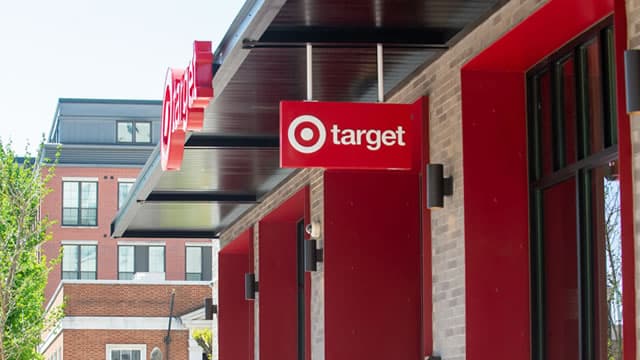Why Target Tumbled 27% in the First Half of 2025

Summary
Target's stock plummeted 27% in H1 2025 due to intensifying market share losses to Walmart, persistent weakness in discretionary spending, and escalating organized retail crime. These issues, compounded by a cautious macroeconomic environment, have eroded profitability and investor confidence. The company faces challenges in inventory management, theft mitigation, and competitive pricing. Investors should monitor Target's strategic responses and operational improvements for signs of recovery in the challenging retail landscape.
Why Target Tumbled 27% in the First Half of 2025\n\nTarget's (TGT) troubles have continued thus far in 2025, culminating in a significant 27% stock price decline in the first half of the year. The retail giant came into the year reeling from market share losses to Walmart, persistent weakness in discretionary categories, and escalating problems with organized retail crime and theft. Unfortunately, many of these challenges have only intensified, exacerbated by a shifting consumer landscape and macroeconomic headwinds.\n\n## Intensifying Headwinds and Market Share Erosion\n\nOne of the primary drivers of Target's underperformance has been its continued struggle to regain market share, particularly against formidable competitors like Walmart. While Target has historically excelled in offering a curated shopping experience with a strong emphasis on discretionary items, the current economic climate has pushed consumers towards value-oriented retailers for essential goods. Walmart's aggressive pricing strategies and robust grocery business have allowed it to capture a larger share of the consumer wallet, leaving Target to contend with a shrinking pie in key categories.\n\nFurthermore, the weakness in discretionary spending has proven more protracted than anticipated. Categories such as home goods, apparel, and electronics, which typically boast higher margins for Target, have seen significant declines in demand. Consumers, facing inflationary pressures and higher interest rates, have prioritized necessities over non-essential purchases, directly impacting Target's sales mix and profitability. This shift has forced Target to increase promotional activity, further compressing margins.\n\n## The Scourge of Organized Retail Crime\n\nOrganized retail crime (ORC) has emerged as a significant and growing drain on Target's profitability. The company has reported substantial inventory shrink due to theft, necessitating increased security measures and impacting store operations. While Target has invested heavily in loss prevention technologies and strategies, the scale of the problem continues to pose a formidable challenge. The financial burden of ORC, coupled with the operational disruptions it causes, has directly contributed to the erosion of investor confidence and the stock's decline.\n\n## Broader Economic Context and Consumer Behavior Shifts\n\nTarget's woes are not entirely isolated; they reflect broader trends in the retail sector. The first half of 2025 saw a continuation of cautious consumer spending, particularly in non-essential categories. High inflation, though moderating, continued to impact household budgets, while elevated interest rates made credit more expensive, dampening big-ticket purchases. This macroeconomic backdrop has disproportionately affected retailers like Target, which rely on a healthy discretionary spending environment.\n\nMoreover, the post-pandemic shift in consumer behavior has solidified. While e-commerce remains strong, the return to in-store shopping has not fully restored pre-pandemic patterns for all retailers. Target's efforts to integrate its digital and physical channels have been ongoing, but the competitive landscape, including the rise of ultra-fast delivery services and specialized online retailers, continues to present challenges.\n\n## Investment Implications and Outlook\n
For investors, Target's 27% decline signals a period of significant uncertainty. The company's ability to reverse its fortunes hinges on several factors:\n
- Effective Inventory Management: Reducing excess inventory in discretionary categories and aligning stock levels with current demand will be crucial for improving margins.\n* Combating Theft: Demonstrating tangible progress in mitigating organized retail crime and reducing shrink will be vital for restoring profitability and investor confidence.\n* Strategic Pricing and Value Proposition: Re-evaluating its pricing strategy to better compete with value retailers while maintaining its brand appeal will be key.\n* Innovation in Core Categories: Finding new ways to drive traffic and sales in its core categories, potentially through exclusive partnerships or unique product offerings, could provide a much-needed boost.\n While the challenges are significant, Target's strong brand recognition and extensive store footprint provide a foundation for potential recovery. However, the path forward will require strategic agility and a clear demonstration of progress on these critical issues to regain investor favor. Investors should closely monitor upcoming earnings reports for signs of stabilization in sales trends, improvements in inventory management, and effective measures against theft. The second half of 2025 will be a critical period for Target to demonstrate its resilience and strategic effectiveness in a challenging retail environment.
Related Articles
Target Unwraps Bullseye's Top Toys List, Plus Thousands of Toys Under $20 to Shop All Season Long
TGT
PositiveSnowline Gold Extends Strike Length by 550 M and Intersects 6.8 Grams per Tonne Gold Over 9.0 M at Its Jupiter Target, Einarson Project, Yukon
TGT
PositiveTarget Corporation (NYSE:TGT) Prepares for Its Largest Target Circle Week
TGT
Neutral